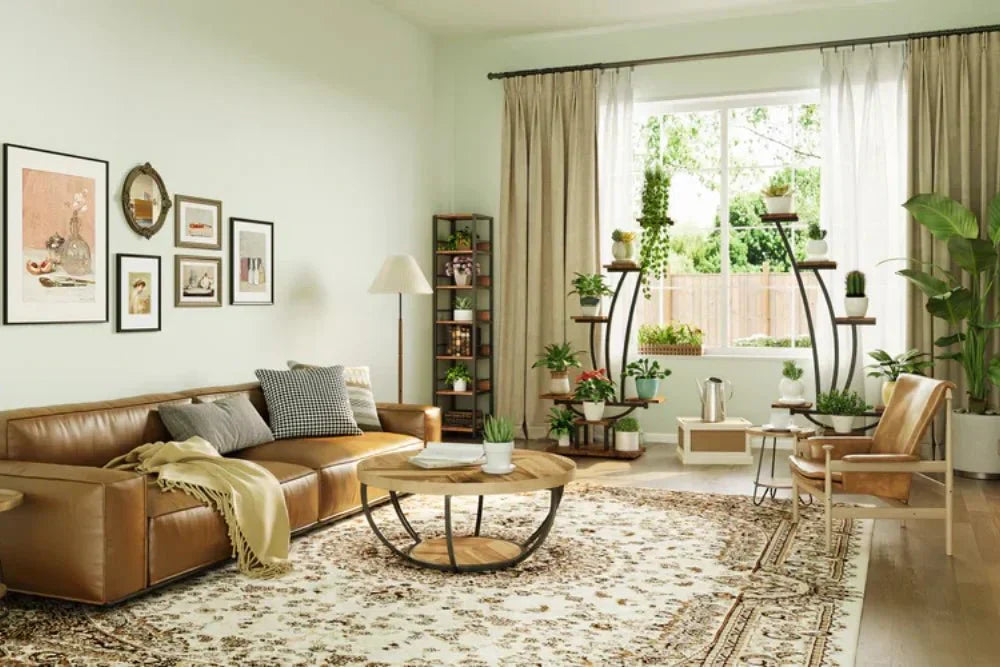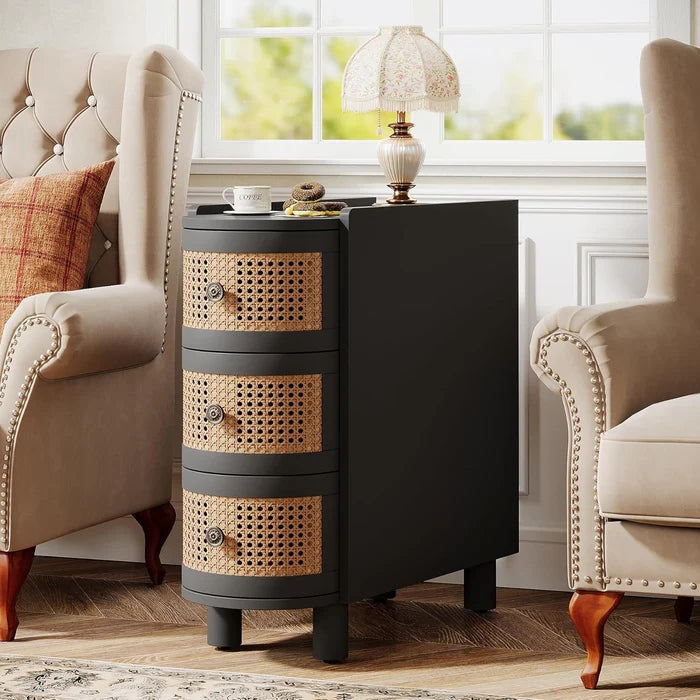Introduction
Selecting the right bookshelf involves more than just finding a place for your books. The material you choose determines not only the shelf's strength and longevity but also how well it complements your interior style. From the timeless appeal of solid wood to the industrial edge of metal, understanding material properties helps you make an informed choice that balances practicality with aesthetics.
Top Bookshelf Materials Compared
Finding the perfect bookshelf material means weighing strength, durability, style and budget. Below we break down the most popular options for UK homes, highlighting their advantages and ideal uses.
1. Solid Wood: Timeless Quality
Crafted from hardwoods like oak and walnut, solid wood bookshelves offer exceptional durability and natural beauty. These pieces become family heirlooms, developing character over years of use.
Advantages:
- Unmatched longevity and strength
- Natural grain patterns add warmth
- Can be refinished to restore appearance
- Ideal for heavy book collections
Considerations:
- Higher investment required
- Sensitive to humidity changes
- Substantial weight
2. Plywood: Strength & Value
Through its cross-grained construction, plywood delivers remarkable stability and load-bearing capacity. It presents an excellent middle ground between solid wood's premium cost and engineered wood's affordability.
Advantages:
- Excellent weight-to-strength ratio
- Resists warping better than solid wood
- Cost-effective for large units
- Stable foundation for heavy items
Considerations:
- Requires veneer or paint for finished look
- Thicker panels needed for heavy loads
- Edges may need finishing
3. MDF & Particleboard: Budget-Friendly Options
These engineered materials provide smooth, uniform surfaces ideal for painted finishes. While not suited for massive weight capacities, they offer stylish solutions for average storage needs.
Advantages:
- Consistently smooth surface
- Takes paint beautifully
- Lightweight and easy to move
- Cost-effective
Considerations:
- Vulnerable to moisture damage
- Limited weight capacity
- Shorter lifespan than wood
4. Metal: Industrial Durability
Steel and aluminium shelving brings robust strength and contemporary style to any space. Perfect for home offices or modern interiors, metal units withstand heavy use with minimal maintenance.
Advantages:
- Exceptional load-bearing capacity
- Easy to clean and maintain
- Contemporary aesthetic
- Long-lasting
Considerations:
- Can feel cold to the touch
- Shows scratches readily
- Limited style versatility
5. Glass & Acrylic: Modern Display
Transparent shelving creates airy, open feelings in compact British rooms. While best for lighter items, these materials make beautiful display solutions for featured collections.
Advantages:
- Enhances light and space perception
- Contemporary elegance
- Easy to clean surfaces
- Makes items stand out
Considerations:
- Weight restrictions apply
- Requires frequent cleaning
- Care needed around children
Balancing Cost & Appearance
Budget Range: MDF or particleboard with laminate finishes offer affordable style solutions for temporary needs.
Mid-Range: Plywood with quality veneers or metal frames provide durability without premium pricing.
Investment Pieces: Solid hardwoods or commercial-grade metal offer lifetime value and timeless appeal.
Matching Materials to Your Decor
Traditional Interiors: Solid wood in oak or walnut brings classic warmth to period homes.
Contemporary Spaces: Metal frames with glass shelves suit modern flats and offices.
Scandinavian Style: Light-toned wood or painted MDF complements minimalist decor.
Industrial Look: Black metal shelving pairs perfectly with exposed brick and concrete.
Frequently Asked Questions
Which material holds heavy books best?
Solid wood and quality plywood offer the greatest weight capacity for substantial collections.
Are MDF shelves suitable for long-term use?
While fine for light to medium loads, MDF may sag over time with heavy books. Reinforced versions perform better.
What's the most low-maintenance option?
Metal shelves require minimal care and withstand daily use with simple wiping.
Can I use glass shelves in a family home?
Tempered glass is safer, but acrylic provides similar transparency with greater durability for busy households.
Which materials work well in damp UK climates?
Metal and moisture-resistant MDF handle humidity better than solid wood in unheated spaces.
Final Thoughts
The ideal bookshelf material balances your practical needs with aesthetic preferences. For those seeking versatile solutions, Tribesigns bookcases combine engineered wood's reliability with thoughtful design, offering storage that complements modern British living. Whether building a home library or displaying cherished items, choosing the right material ensures your shelves remain both functional and beautiful for years to come.



